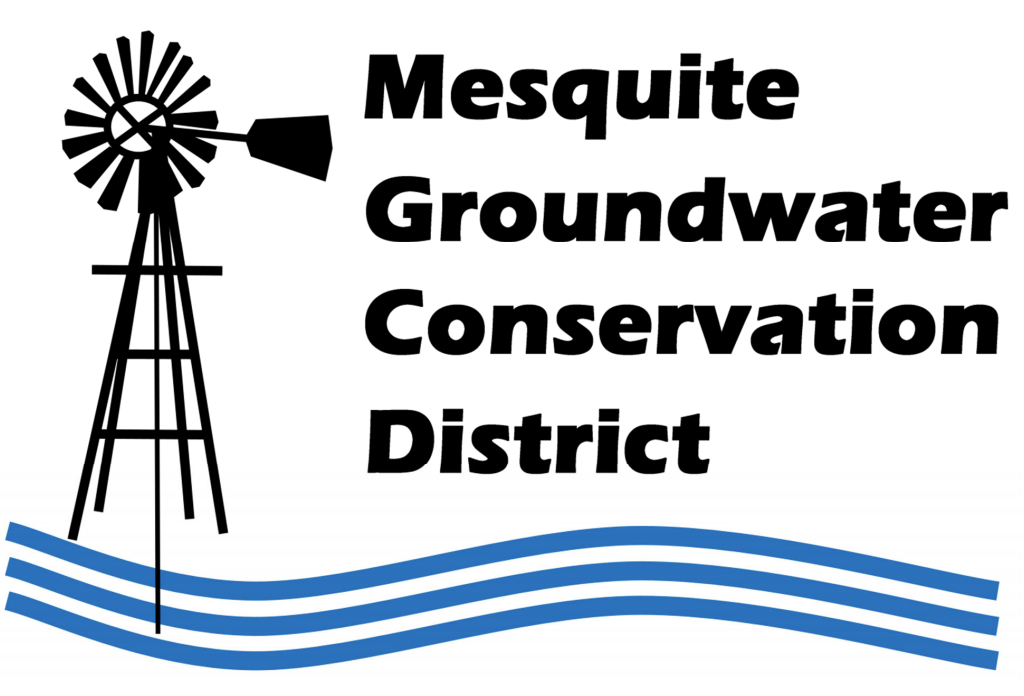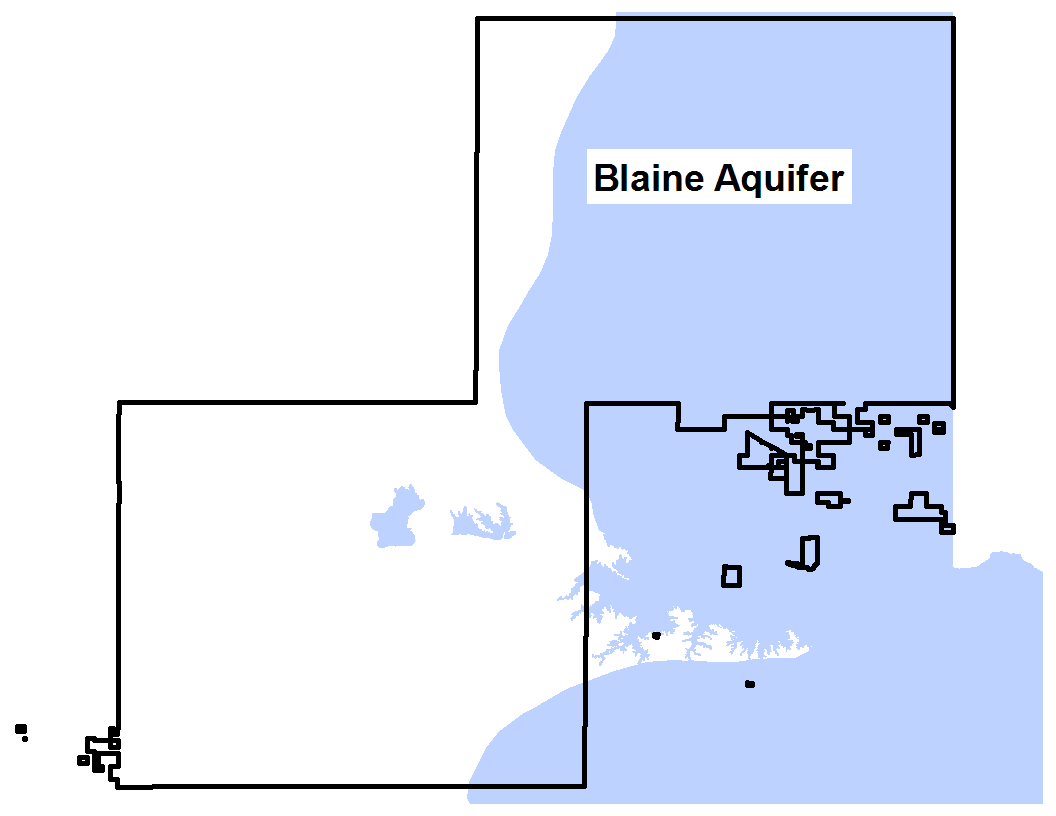Blaine Aquifer
Groundwater within the District is derived primarily from the Seymour and Blaine aquifers. Minor amounts of groundwater are also produced from the porous portions of other local formations such as the Whitehorse Group. The Seymour strata typically overlies the Blaine Formation and/or Whitehorse Group.
Blaine Aquifer:
The Blaine Aquifer is composed of anhydrite and gypsum with interbedded dolomite and clay and is an important source of groundwater in the District. The Blaine Formation crops out in a band from Wheeler County south through Collingsworth and Childress Counties to Fisher County and extends westward in the subsurface to adjacent counties. In Collingsworth County the Blaine is found along the Salt Fork of Red River north to Wheeler County and east to the Oklahoma state line. The Blaine is also found South and East of Wellington, extending east to the Oklahoma state line and south to the Prairie Dog Town Fork of the Red River. There are also small areas in the northeast and southeast corners of Hall County. Recharge occurs fairly rapidly and travels primarily in the numerous solution channels of the Blaine under water‐table conditions.
Overall water quality is poor and salinity may be high, limiting the use of water for human and livestock consumption. Depth to water ranges from a few feet to greater than 200 feet. Well depths range up to 300 feet below ground surface. Well yields vary from a few gallons per minute up to 1,000 gallons per minute. Although water in storage is generally under water‐table conditions, larger yields are often associated with those areas of the aquifer that are confined by relatively impervious beds. Dry holes or wells of low yield are commonly found adjacent to wells of moderate to high yields because of the uneven nature in confining beds and the occurrence of the water in solution zones. Groundwater not intercepted by wells tends to discharge naturally in areas of lower topography through seeps and springs. The Blaine Aquifer comprises about twenty four percent of the District area and provides about nineteen percent of the irrigation water pumped in the District.
Resources
About MGCD
The District was created in 1985 by the 69th Texas Legislature (HB1148) with the local confirmation election being held in November 1986.
Board of directors
MGCD is governed by a Board of eight elected Directors. Each Director represents a Precinct as shown on the map below.
District Rules
The District’s Rules are a formal document that describes the legal tools used by the District to achieve the objectives within the Management Plan.
District Services
MGCD offers many services to the community. Water quality testing, well siting, and educational presentations are some of the frequent services provided.

